The London Gateway port will handle 3.5 million containers a year and is a huge construction undertaking. But an added complication is the relocation of thousands of animals that inhabit the area - at a cost of £50m
If proof were needed that badly polluted industrial sites can be successfully rehabilitated, the former Shell Haven oil refinery on the banks of the Thames is it. This 750ha site closed down in 1999.
Shell spent more than £50m demolishing the refinery and cleaning up the site before moving on. In the following 10 years, nature has recolonised the site so it now has the typical Thames-side mix of long grass and reeds complete with animals and reptiles. These include snakes, lizards and protected species such as water voles and great crested newts, which were attracted to the ponds created by water collecting in the depressions left by former pile caps.
Although this is great for biodiversity, it’s not such good news for port operator DP World. It is just starting the mammoth task of building the London Gateway port, which is set to increase the UK’s port capacity by 3.5 million shipping containers each year (see What is London Gateway? below). The scale of the job is mind-boggling: 23 million m3 of earth will be used to build up the level of the site by 3m so rising sea levels won’t flood what will be Europe’s largest logistics park and an enormous port.
The new port is being designed to handle the next generation of cargo ships that are so big they can’t get up the Thames. This means scooping out 3.5m of riverbed from a 300m wide channel stretching from the port all the way to the North Sea 15 miles away. Because the ships are too big to get anywhere near the riverbank, a 2.7km long, 175ha quay has to be created in the river.
Inevitably all this work is having a huge impact on terrestrial and marine wildlife. But some of the species are protected and the directors of DP World can be thrown in jail if a worker so much as injures one. So it is crucial to ensure no harm comes to any living creature and DP World is spending £50m to achieve this - ironically the same amount of money Shell spent making the site such a welcoming place for wildlife in the first place.
Natural England is 100% focused on the newts and is not interested in anything else
Marcus Pearson
DP World has drafted in wildlife supremo Marcus Pearson, who managed the environmental programme on the Channel Tunnel Rail Link, Heathrow Terminal 5 and, most recently, the Olympic Park. First, he has to survey the whole site to find out what is living there. Then he has to work out precisely how the animals are going to be caught and where they will be moved to. He then has to work up a plan that details how the new sites will be monitored and managed over the next 10 years. A species masterplan is also prepared. And until Pearson has done his job, no construction work can start on the site.
All the method statements and plans are submitted to Natural England for approval. “It’s a tortuous process and a bureaucratic nightmare,” says Pearson, adding that this application is the largest ever handled by Natural England. Once work is under way, the bureaucracy doesn’t let up - Pearson has to organise a quarterly progress meeting for all the stakeholders, 92 people in all. “It takes about a week to organise,” he says.
The basic principle of wildlife relocation is that exactly the same habitat has to be recreated elsewhere. In the case of the newts, DP World has had to buy two plots of land to decant them to. These add up to 41ha of what was originally grazed marshland to the north and east of the main site. Having bought the land, 20,000 bushes and shrubs have been planted and 45 ponds dug. Another four ponds have been placed in a “buffer zone” ringing the perimeter of the site.
But fewer great crested newts have been caught than the initial surveys suggested.
“We are going to have all these ponds, which are quite expensive to build, with not many newts in them,” says Pearson. Despite this, Natural England rules stipulate that the land cannot be used for other purposes - the tenant farmer cannot continue grazing the land as before.
“Natural England is 100% focused on the newts and is not interested in anything else,” says Pearson. “The pond areas can be grazed at a rate of one cow per 4ha, which is no good to the farmer. His family has been here for three generations so it’s quite emotional. I think we could have kept the area much smaller and kept it as a viable farm.”
Nearly 3km of tidal zone at the edge of the river is being lost to the quay so has been recreated on a 30ha plot next to the site
Like the great crested newts, the water voles also needed a carefully prepared habitat. A site was found on the River Colne in Essex, but first the mink had to be eliminated as they would have killed the voles. According to Pearson any delays catching the mink would have delayed moving the water voles - “which impacts on the works in the park”. “The financial penalties would have been horrendous,” he says. Fortunately the relocation of water voles has gone to plan; half of the 300 that were caught on the London Gateway site were recently released into their new home.
There are four types of reptile on the site: slowworms, adders, common lizards and grass snakes. Environmental contractor Aecom reckons there are 40,000 of them. They are being rehomed in a variety of locations - for example, 8,000 reptiles recently went to a nearby RSPB reserve at West Canvey Marsh. Most of the rest are being taken to a disused airfield in Wiltshire.
Out on the Thames, work dredging the river channel has started. The material is being used to create the new quay; once this is complete and all the wildlife removed, dredged material will be used to raise the level of the site by 3m. It will take four years to create the new river channel with the work constantly monitored by 12 people. Special buoys in the river measure the levels of dissolved oxygen, the amount of silt and the salinity of the water and send the data back to the monitoring station. If any of these exceed prescribed limits, work has to stop. Fish and bird populations are also monitored, with fishermen compensated for the loss of their catches. But Pearson says they don’t always do the paperwork needed to get the money. “I’ve had rotten fish sent to me,” he says with a sigh.
As happened with the land, the lost maritime habitat has to be recreated elsewhere. Nearly 3km of tidal zone at the edge of the river is being lost to the quay so it has been recreated on a 30ha plot next to the site. A second 44ha site has been bought on the other side of the river. Half a metre has been skimmed off its surface and a 300m long breach has been made in the sea wall so water can flood in at high tide, creating ideal conditions for wading birds.
A Roman roundhouse and saltmaking works was discovered during the levelling works. This had to be excavated by archeologists then protected from the water flooding into the site. The work is finished but Pearson is still waiting for the birds to turn up. “The aim is to get 7,000 wading birds here, what we would like are avocets,” he says. “Unfortunately most of the ones here at the moment are gulls from the tip.”
How to catch 300 voles, 1,500 great crested newts and 40,000 reptiles
The first tranche of animals were removed from the 350ha port area of the site by Thomson Ecology. Multidisciplinary consultant Aecom won the job to clear the 200ha area occupied by the logistics park.
Richard Graves, Aecom’s director of ecology, expects that by the time his team of 50 people has finished clearing the site in early November, 300 voles, 1,500 great crested newts and 40,000 reptiles will have been moved.
“It’s a very intensive effort,” he says, adding that the team has to be on hand seven days a week for almost 24 hours a day because animals that have been captured cannot be left alone over a weekend.
Great crested newts are caught by erecting fences made from poles and plastic sheeting. Because the animals can’t get past the fences, they walk along them and into strategically placed sunken buckets that are regularly emptied by Aecom. More than 40km of fences have been erected to catch the newts. “You are talking about a huge manpower effort firstly to put up all the fences and secondly to check all the buckets,” says Graves.
Catching the reptiles is an even bigger job. There are slowworms, adders, common lizards and grass snakes on the site. A total of 14,000 squares made from roofing felt or a corrugated plastic material are dotted around the site. These warm up in the sun and because reptiles like warm places they collect under the tiles. “Those 14,000 tiles are checked typically twice a day,” says Graves. “The only problem is when the weather gets hot the reptiles become too fast to capture.” The team need to wear gloves and long trousers to protect against snake bites. “They aren’t really that dangerous,” says Graves.
The water voles were caught by Thomson using traps. After they were caught the animals were placed in a dedicated centre while their new home on the river Colne was prepared. These have all been moved - except for 10 breeding pairs that have been kept back in case anything untoward happens to the rehomed voles.
Reptiles cannot be kept in captivity for very long: snakes can be kept for four days while other reptiles are kept for two days. Regular trips are made to the disused airfield in Wiltshire where most of the reptiles are being rehoused - a van can typically take 500 animals at a time.
What is London Gateway?
The idea behind the £1.5bn London Gateway scheme is to revolutionise the way goods are imported and distributed. Currently, goods are brought into docks at Felixstowe and Southampton, then loaded onto lorries and taken to a distribution corridor on the M1 as there isn’t room at the docks to store and distribute goods.
The idea is to combine a port and distribution centre at London Gateway, which harks back to the days of warehouses next to the Thames.
The distribution centre will be Europe’s largest with 860,000m2 of storage space. Because about half of the goods brought into the port are destined for London and the South-east, it cuts out an expensive 100-mile road journey to the M1 distribution centres. Developer DP World says this should cut out 60 million lorry miles a year. Goods can be sent out from the distribution centre by road or rail or by small boats.
The target source for goods is Asia. These will be brought in by a new generation of 400m-long super-cargo ships. The new quay will have six berths and the boats will be unloaded using automated machinery. The port will be able to handle 3.5 million shipping containers a year.





















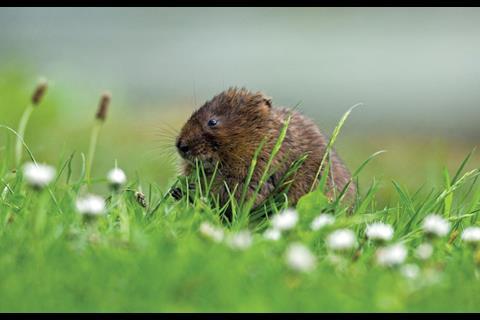
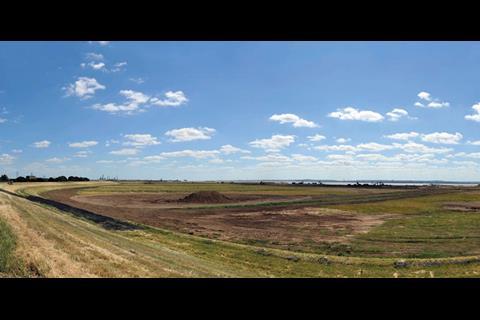
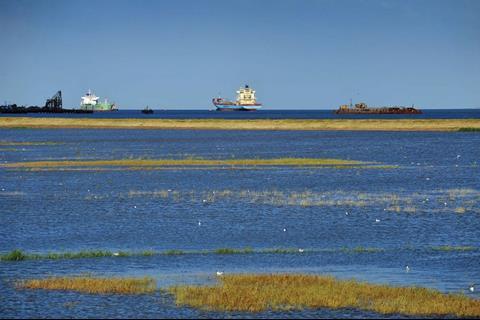
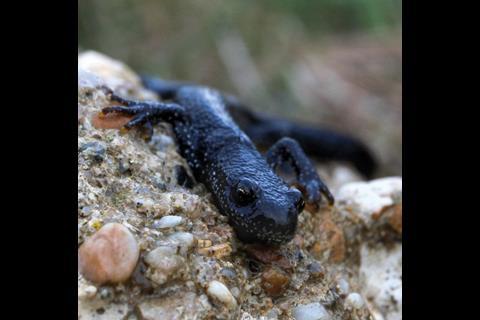
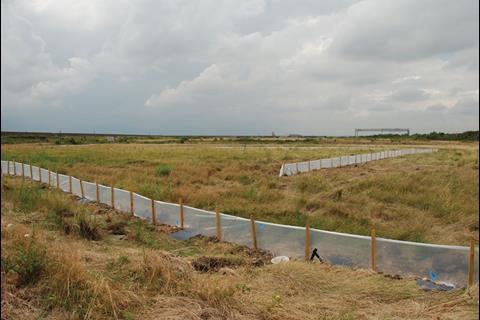

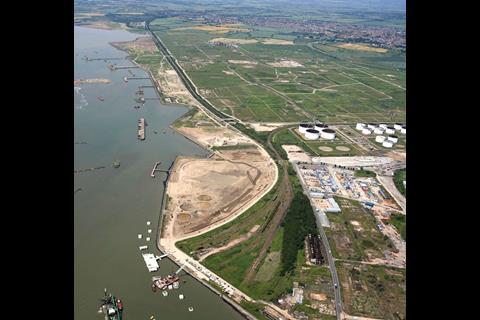
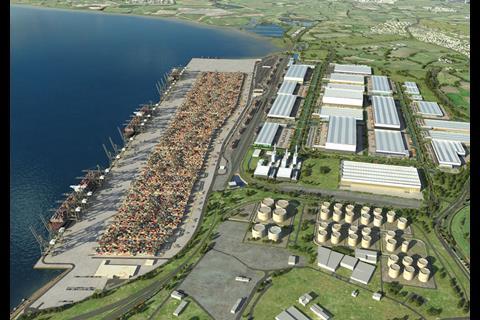
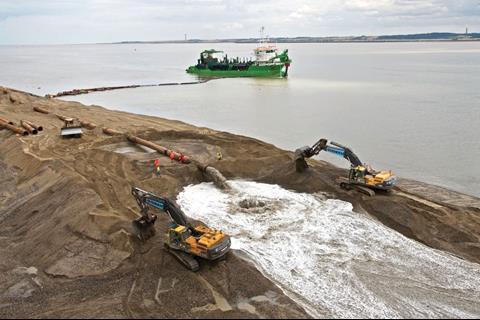







2 Readers' comments